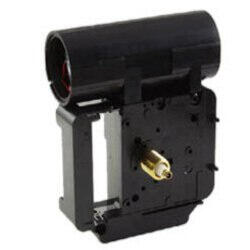
On Schedule as well as Chime Clock MovementsTime and also chime clock movements are interesting, reasonably modern digital tools that combine the prosaic feature of informing time with the very old practice of ringing out the hours with bells. Time and also chime clock movements (or motors), tracking elapsing time, setting the hour and minute hands to their appropriate positions on a continuing basis, as well as they also utilize this info to activate chiming series regularly (i.e., per hour and/or quarter-hourly). These gadgets might additionally apply particular various other functions or novelties, relying on their developed attribute set.Chime clock movements utilize time, you may state, to carry out all the operations they have been configured to fulfill. Nowadays, the motor is not mechanical yet digital, implying that it is a lot less overloaded with various physical components, such as equipments, pendulums, weights, springtimes, and also escapements. This in turn suggests that they have the capability to work out past the abilities of standard, mechanical watches.Power is called for, from one source or an additional, for the electric motor to function; in the mechanical case, hanging weights or curled springtimes use torque to flywheels to generate rotational pressure, whereas in the electronic situation, voltage related to quartz crystals generates streams of pulses at a really high and also precise frequency. The bulk of stuff related to mechanical movements renders them rather restricted and additionally requires them to be reset or rewound on a routine basis. Maintenance comes to be troublesome.The digital clock motion essentially does whatever in software application. The end outcome coincides, namely, turning concentric shafts (whereupon are mounted the 2 or 3 hands) right into placement particular to the dial as well as its numbers. Yet as opposed to determining the correct rotational angles via a network of gears, the pulses from the crystal are counted electronically and partitioned continuously to calculate stated angles.This streamlining of procedures makes it relatively simple and simple to show even more complicated timekeeping. As opposed to a 12-hour cycle (twelve o'clock at night and noon look the very same), some movements go a complete 1 day or even much longer (a week or a month) before resetting hand placements. Executing such time extensions involves specifically calibrated dials and might require an extra hand, yet the effect has a tendency to captivate viewers.As for the chime capacities of certain clock movements, contemporary implementations have a tendency to imitate similar performance located in various types of clocks (cuckoo clocks, grandfather clocks, and also some mantle clocks) going back centuries. The idea is to imitate Big Ben, claim, ringing the top of the hr each hour. Another facet is to play a tune with the bells or carillon.Though the elegant watches of yore that chimed may have had real chimes set up in a cabinet, that is not likely to be the situation today. Modern movements typically manufacture bell-like noises or play tasted waveforms in ariose sequence. The effect is fairly sensible and convincing.The majority of people know with the Westminster and Winchester songs, as well as two others, Whittington and also St. Mary's, are additionally prominent. You can find chime movements nowadays that offer any or every one of these options. Furthermore, in many cases you can tape your very own song to appear the hour and replace it of what is given by the maker.A word of caution: chimes seeming every fifteen mins can get bothersome instead swiftly, no matter just how charming. This is especially true if the clock is in or near a bedroom. We suggest making certain your activity has a button for silencing the chime or a minimum of disabling it at night.There's no question that the clockmaker has at their disposal a broad set of tools for creating splendid timepieces. A good way to stun your friends or member of the family is by creating clocks based upon time as well as chime clock movements.


